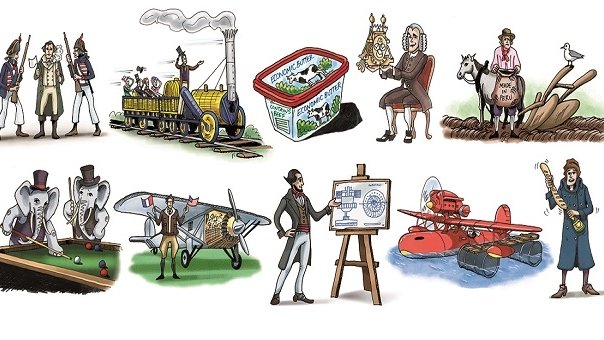Help to shape the Longitude Prize challenge
30 Jul 2014
Written by Geoff Mulgan
The battle against the bugs has become something of a crusade. A month ago, the public chose the search for an answer to antibiotic resistance as the topic for the 2014 Longitude Prize, a £10m challenge to help solve one of the greatest issues of our time.
Recently, David Cameron committed the UK to leading a global campaign to save us from the potentially devastating problems that could result from antibiotics becoming ever less effective. Millions of people are now aware of the issue, and thousands, perhaps tens of thousands, are working to address it.
Vast numbers have taken part in the conversation about what the Longitude Prize 2014 should focus on, arguing about which of the six challenges initially selected was the most important and urgent. Antibiotics were a worthy winner – specifically finding a way to tackle the rise of antibiotic resistance, a problem that could threaten millions of lives.
We have relied on antibiotics for over 80 years, and can all see their benefits. But too much use, and too often treating antibiotics as a first response, has fuelled the rise of resistance.
Beyond the importance of the issue itself, however, we hope that the Longitude Prize 2014 will help to promote challenge (or inducement) prizes themselves as a way of solving big scientific problems. But why can they be such a useful approach?

The value of a challenge
First, unlike the many retrospective prizes out there which reward people, sometimes late into old age for the wonderful things they’ve done, challenge prizes have an opposite virtue. They catalyse and inspire action.
Further, they fit the spirit of our times: a belief in openness, the notion that eligibility shouldn’t depend on the grandeur of your title or the status of your institution, but on the quality of your ideas. And these ideas can come from anywhere too. A team of university researchers, a startup, even a lone wolf inventor, anyone could win.
Second, they deliver results. Richard Branson is testing the limits of space travel with the Virgin Earth Challenge. Elon Musk, the entrepreneur behind the Tesla car, is on the board of the X-Prize – an organisation that regularly sets ambitious challenges funded by wealthy individuals.
The R&D benefits can be magnified far beyond the size of the prize pot. The Ansari X Prize for a reusable private space vehicle, awarded in 2004, was for $10m. But the competing teams spent over $100m on technological development.
Third, the approach can have clear business benefits. There has recently been a big push towards “open innovation” methods, where firms offer rewards for innovators anywhere who can produce solutions to their needs. Sometimes, it can be a much more efficient way of generating ideas than paying for big internal laboratories, and it recognises that inventiveness can be found anywhere, often in the most surprising places.
But governments are crucial too. They play a vital role in backing research, including for most of the ideas that the wealth of places like Silicon Valley rests on, and they are also making more use of prizes. The EU, for example, is considering a significant expansion of prizes as part of its Horizon 2020 programme. The Technology Strategy Board – the launch funding partner of the Longitude Prize 2014 – has funded many others.
And, of course, the original eighteenth century Longitude Prize was funded by government.
Longitude needs you
This summer, Nesta will be engaging many more scientists to help us finalise the detailed prize criteria for the main Longitude Prize, which we’ll publish in the autumn. But we also want businesses to come forward and to give us their thoughts on the criteria to let us know if we have missed anything or if we should be thinking differently.
The stakes are high. The more minds that can be mobilised, the more chance we’ll have of solving the great challenges of our times.
This article was originally published by CityAM. Read the original article.
